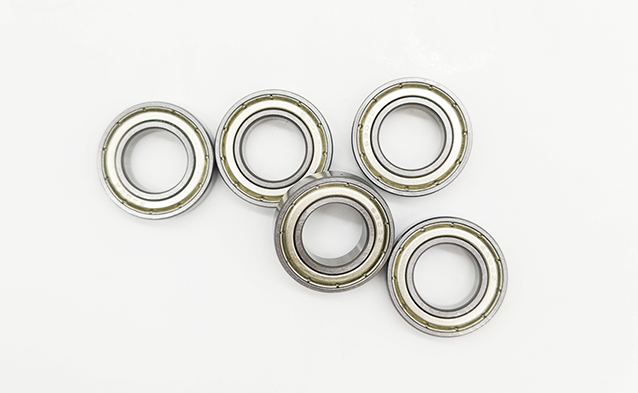
 Home > News
Home > NewsSteel ball bearings are critical components in a wide range of machinery and equipment, from automotive to industrial applications. Their primary function is to reduce friction between moving parts, ensuring smooth operation and enhancing the longevity of the machinery. However, like all mechanical parts, they require regular maintenance to function optimally. This article delves into the importance of maintaining steel ball bearings and outlines effective maintenance methods.

Regular maintenance of steel ball bearings is crucial for several reasons:
Longevity: Proper maintenance extends the lifespan of the bearings, reducing the need for frequent replacements.
Efficiency: Well-maintained bearings operate more efficiently, reducing energy consumption and operational costs.
Safety: Bearings in poor condition can lead to machinery failures, posing safety risks to operators and damaging other parts of the equipment.
Performance: Regular upkeep ensures that bearings operate at peak performance, maintaining the precision and reliability of the machinery.
Before diving into maintenance methods, it is essential to understand common issues that can affect steel ball bearings:
Contamination: Dirt, dust, and other contaminants can enter the bearing, causing wear and tear.
Lubrication Failure: Inadequate or improper lubrication can lead to increased friction and overheating.
Corrosion: Exposure to moisture and chemicals can cause rust and corrosion.
Misalignment: Incorrect installation or operational stresses can lead to misalignment, causing uneven wear.
Fatigue: Over time, bearings can suffer from material fatigue due to continuous operation under load.
Effective maintenance of steel ball bearings involves a combination of inspection, cleaning, lubrication, and preventive measures. Here’s a detailed look at these methods:
Regular inspection is the first step in maintaining steel ball bearings. It involves:
Visual Inspection: Check for signs of wear, corrosion, and contamination. Look for any unusual noises or vibrations during operation.
Temperature Monitoring: Use infrared thermometers to monitor the operating temperature of the bearings. An abnormal rise in temperature can indicate lubrication issues or excessive friction.
Vibration Analysis: Employ vibration analysis tools to detect irregularities in bearing operation. High levels of vibration can signal misalignment, imbalance, or defects.
Cleaning is essential to remove contaminants that can cause premature bearing failure. The process involves:
Disassembly: Carefully disassemble the bearing from the machinery, following manufacturer guidelines.
Solvent Cleaning: Use appropriate solvents to clean the bearing components. Avoid using harsh chemicals that can damage the bearing material.
Drying: Ensure all components are thoroughly dried before reassembly to prevent corrosion.
Proper lubrication reduces friction, prevents wear, and protects against corrosion. Steps for effective lubrication include:
Selecting the Right Lubricant: Choose lubricants specified by the bearing manufacturer. Common lubricants include oils and greases.
Regular Lubrication: Establish a lubrication schedule based on the operating conditions and manufacturer recommendations. Over-lubrication can be as harmful as under-lubrication.
Applying Lubricant: Use appropriate methods to apply lubricant, ensuring it reaches all bearing surfaces. For greased bearings, ensure the grease is evenly distributed.
Preventive maintenance involves steps to avoid bearing issues before they occur:
Proper Installation: Ensure bearings are correctly installed using the right tools and techniques to prevent misalignment and damage.
Environmental Control: Protect bearings from contaminants by using seals and shields. Control the operating environment to minimize exposure to moisture and chemicals.
Load Management: Avoid overloading the bearings. Ensure the machinery is operating within the specified load limits to prevent excessive stress on the bearings.
Storage: Store bearings in a clean, dry environment. Avoid exposing them to moisture, dust, and other contaminants.
Maintenance of steel ball bearings is a critical aspect of machinery upkeep. Regular inspection, cleaning, lubrication, and preventive measures ensure that bearings function efficiently and have a prolonged lifespan. By adhering to these maintenance methods, operators can reduce downtime, enhance safety, and optimize the performance of their equipment. Investing time and resources in the proper maintenance of steel ball bearings ultimately leads to cost savings and improved operational reliability.
View More(Total0)Comment Lists